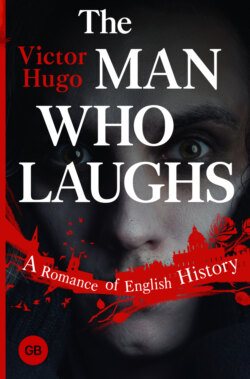Читать книгу The Man Who Laughs. A Romance of English History - Виктор Мари Гюго, Clara Inés Bravo Villarreal - Страница 7
Another preliminary chapter
The comprachicos
II
ОглавлениеA child destined to be a plaything for men-such a thing has existed; such a thing exists even now. In simple and savage times such a thing constituted an especial trade. The 17th century, called the great century, was of those times. It was a century very Byzantine in tone. It combined corrupt simplicity with delicate ferocity-a curious variety of civilization. A tiger with a simper. Madame de Sevigné minces on the subject of the fagot and the wheel. That century traded a good deal in children. Flattering historians have concealed the sore, but have divulged the remedy, Vincent de Paul.
In order that a human toy should succeed, he must be taken early. The dwarf must be fashioned when young. We play with childhood. But a well-formed child is not very amusing; a hunchback is better fun.
Hence grew an art. There were trainers who took a man and made him an abortion; they took a face and made a muzzle; they stunted growth; they kneaded the features. The artificial production of teratological cases had its rules. It was quite a science-what one can imagine as the antithesis of orthopedy. Where God had put a look, their art put a squint; where God had made harmony, they made discord; where God had made the perfect picture, they re-established the sketch; and, in the eyes of connoisseurs, it was the sketch which was perfect. They debased animals as well; they invented piebald horses. Turenne rode a piebald horse. In our own days do they not dye dogs blue and green? Nature is our canvas. Man has always wished to add something to God’s work. Man retouches creation, sometimes for better, sometimes for worse. The Court buffoon was nothing but an attempt to lead back man to the monkey. It was a progress the wrong way. A masterpiece in retrogression. At the same time they tried to make a man of the monkey. Barbara, Duchess of Cleveland and Countess of Southampton, had a marmoset for a page. Frances Sutton, Baroness Dudley, eighth peeress in the bench of barons, had tea served by a baboon clad in cold brocade, which her ladyship called My Black. Catherine Sedley, Countess of Dorchester, used to go and take her seat in Parliament in a coach with armorial bearings, behind which stood, their muzzles stuck up in the air, three Cape monkeys in grand livery. A Duchess of Medina-Celi, whose toilet Cardinal Pole witnessed, had her stockings put on by an orang-outang. These monkeys raised in the scale were a counterpoise to men brutalized and bestialized. This promiscuousness of man and beast, desired by the great, was especially prominent in the case of the dwarf and the dog. The dwarf never quitted the dog, which was always bigger than himself. The dog was the pair of the dwarf; it was as if they were coupled with a collar. This juxtaposition is authenticated by a mass of domestic records-notably by the portrait of Jeffrey Hudson, dwarf of Henrietta of France, daughter of Henri IV., and wife of Charles I.
To degrade man tends to deform him. The suppression of his state was completed by disfigurement. Certain vivisectors of that period succeeded marvellously well in effacing from the human face the divine effigy. Doctor Conquest, member of the Amen Street College, and judicial visitor of the chemists’ shops of London, wrote a book in Latin on this pseudo-surgery, the processes of which he describes. If we are to believe Justus of Carrickfergus, the inventor of this branch of surgery was a monk named Avonmore-an Irish word signifying Great River.
The dwarf of the Elector Palatine, Perkeo, whose effigy-or ghost-springs from a magical box in the cave of Heidelberg, was a remarkable specimen of this science, very varied in its applications. It fashioned beings the law of whose existence was hideously simple: it permitted them to suffer, and commanded them to amuse.
